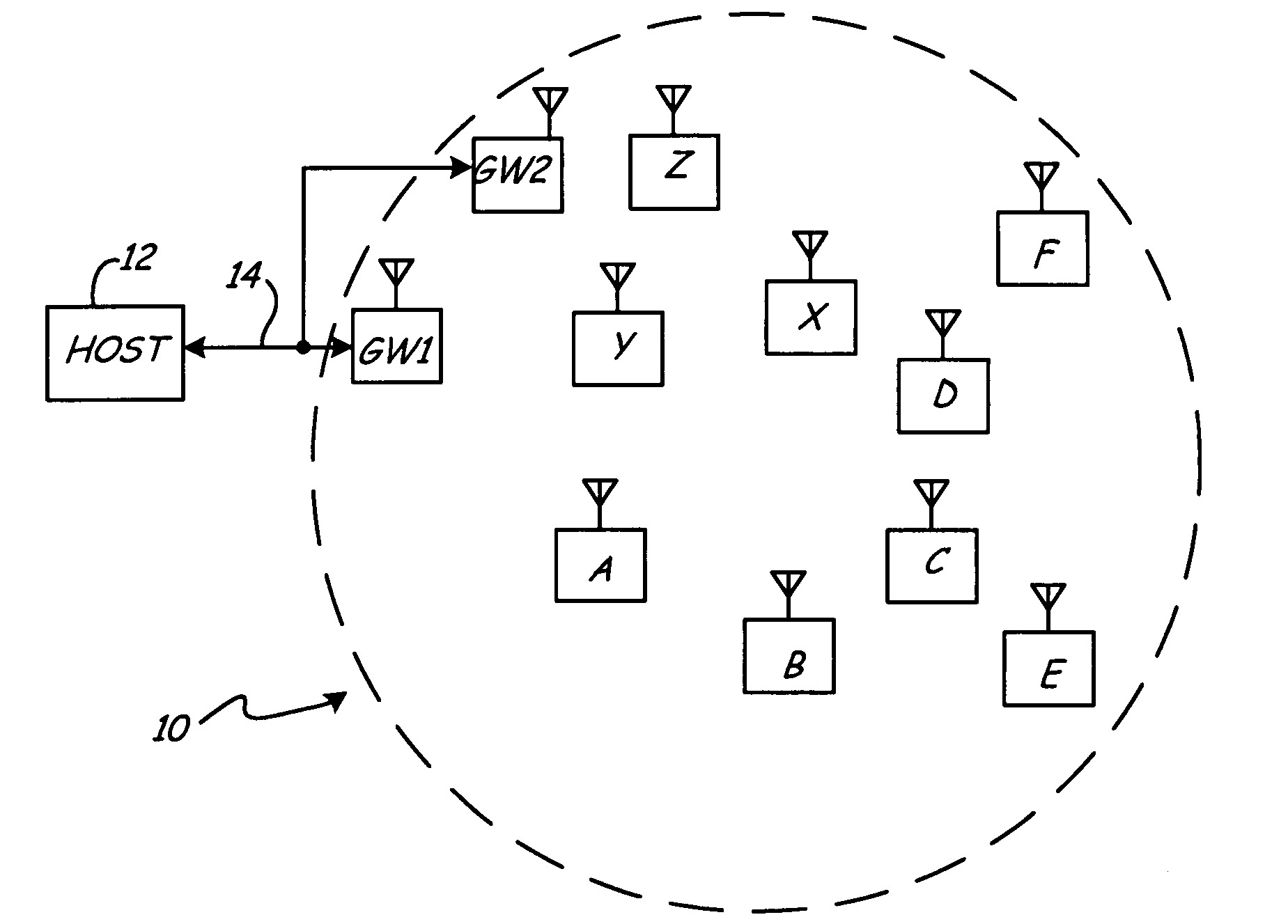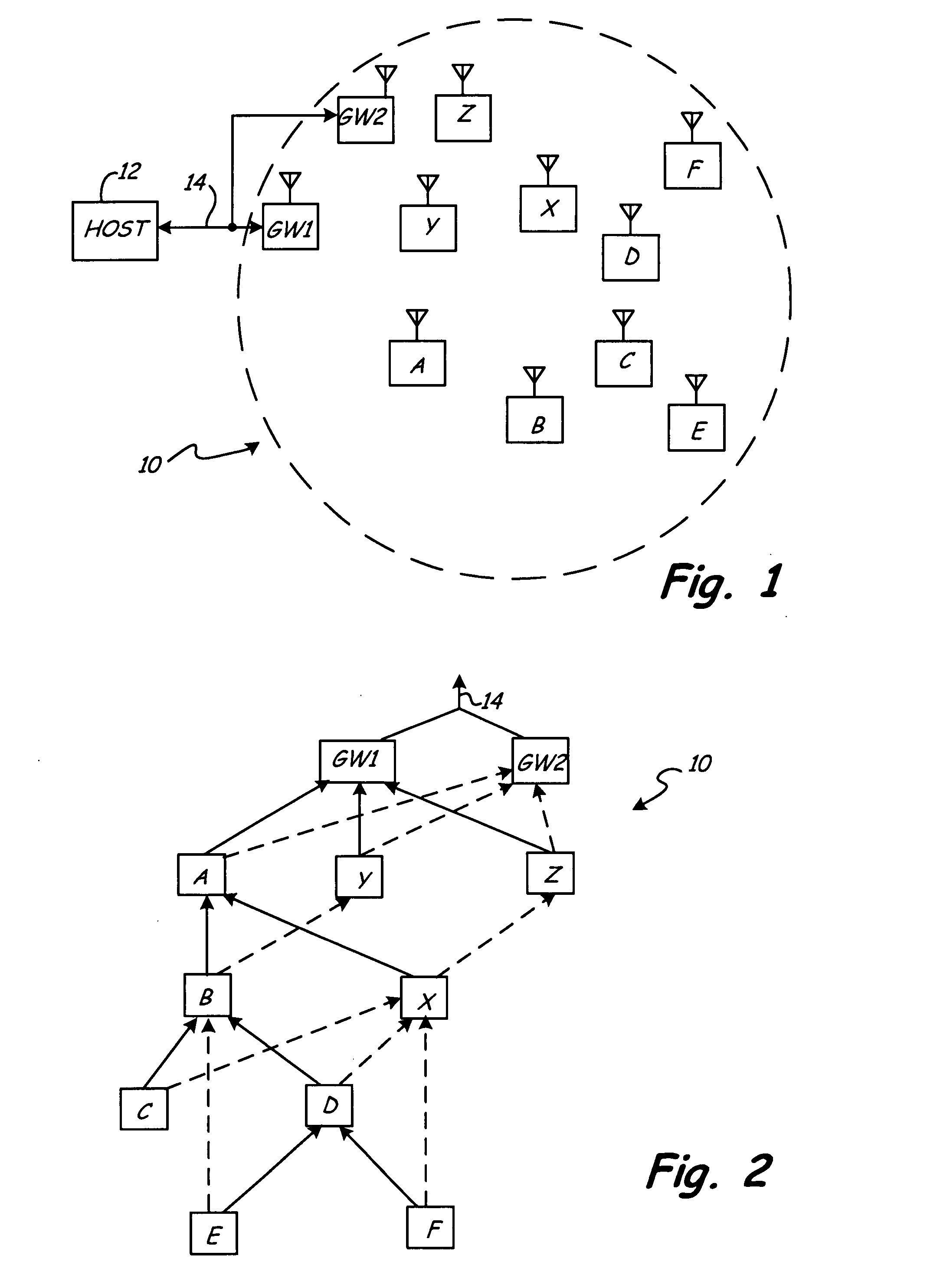Wireless mesh network with locally activated fast active scheduling of wireless messages
a wireless message and wireless mesh technology, applied in the field of wireless mesh networks, can solve the problems of increasing its own power consumption, reducing its battery life, and causing large installation costs, and achieve the effect of increasing traffic capacity and increasing power consumption
- Summary
- Abstract
- Description
- Claims
- Application Information
AI Technical Summary
Benefits of technology
Problems solved by technology
Method used
Image
Examples
Embodiment Construction
[0016]FIG. 1 shows mesh network 10, which includes gateway nodes GW1 and GW2 and nodes A, B, C, D, E, F, X, Y, and Z. Each node includes a radio transceiver for wireless communication, and a power source, such as a long life battery or low power energy scavenging source. In addition, the nodes may include sensors or actuators with associated signal processing circuitry, and control circuitry for controlling operation of the node, including the time schedule on which the RF transceiver is active.
[0017]Gateway nodes GW1 and GW2 interface mesh network 10 with host computer 12 over high speed network 14. High speed network 14 may be a wired network, such as Ethernet, Profibus, Foundation Fieldbus, Modbus, DeviceNet, etc., or a separate wireless network, such as Wi-Fi, WiMAX, etc. Messages may be transmitted from host 12 to gateway node GW1 or GW2 and then to a selected node of mesh network 10 over one of several different paths. Similarly, messages from individual nodes of mesh network ...
PUM
 Login to View More
Login to View More Abstract
Description
Claims
Application Information
 Login to View More
Login to View More - Generate Ideas
- Intellectual Property
- Life Sciences
- Materials
- Tech Scout
- Unparalleled Data Quality
- Higher Quality Content
- 60% Fewer Hallucinations
Browse by: Latest US Patents, China's latest patents, Technical Efficacy Thesaurus, Application Domain, Technology Topic, Popular Technical Reports.
© 2025 PatSnap. All rights reserved.Legal|Privacy policy|Modern Slavery Act Transparency Statement|Sitemap|About US| Contact US: help@patsnap.com


